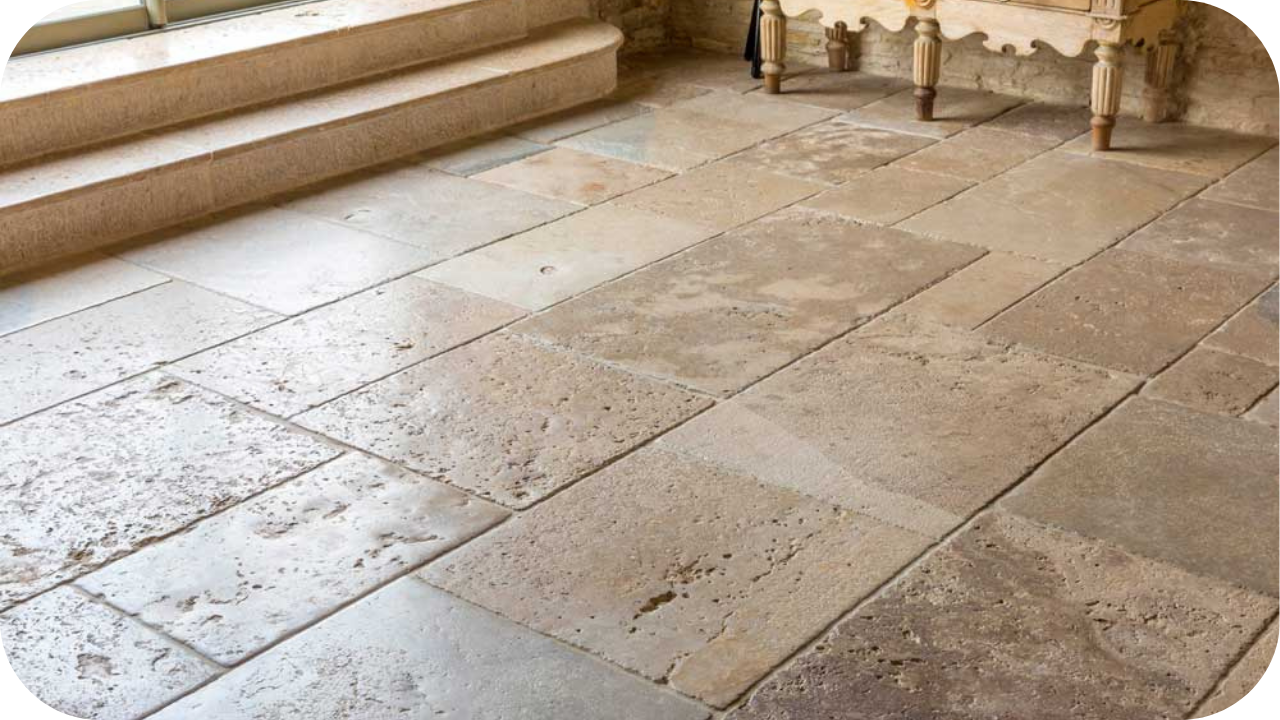
Maintaining sandstone walls can be a challenge, especially when traditional methods harm the environment.
Chemical cleaners and harsh treatments not only degrade the stone but also contribute to ecological damage. Homeowners often face the dilemma of choosing between preservation and sustainability.
However, there’s a better way. By adopting eco-friendly approaches to care and maintenance, we can protect both our sandstone walls and the planet. In this article, we’ll explore sustainable solutions to keep your sandstone walls pristine while minimizing environmental impact.
Sandstone Composition and Vulnerabilities
Understanding the composition and vulnerabilities of sandstone is crucial for effective care and maintenance. Sandstone is primarily composed of quartz grains, cemented together by various minerals like silica, calcite, or iron oxide.
Its porous nature makes it susceptible to water absorption, leading to erosion, staining, and biological growth.
One vulnerability is its sensitivity to acidic substances, which can cause etching and discoloration. Additionally, sandstone can be prone to spalling, especially in freezing climates, where water expands within its pores, causing the surface to flake off.
To mitigate these vulnerabilities, it’s essential to choose cleaning agents with a neutral pH to avoid damaging the stone.
Sealing the surface with a breathable, water-repellent sealant helps prevent moisture infiltration while allowing the stone to breathe. Regular inspections for signs of damage, such as cracks or efflorescence, enable early intervention and preservation of the sandstone’s integrity.
Eco-Friendly Sandstone Walls Cleaning Methods
- Vinegar Solution: Dilute vinegar with water and apply using a soft brush to remove dirt and stains effectively.
- Lemon Juice: Mix lemon juice with water for spot-treating stains or gentle overall cleaning, thanks to its citric acid content.
- Baking Soda Paste: Create a paste with water and baking soda to tackle stubborn stains or biological growth, using its abrasive texture for effective cleaning.
- Test First: Always test any cleaning solution on a small area to ensure compatibility and avoid damaging the sandstone or the environment.
Preventive Sandstone Walls Maintenance Strategies
- Regular Inspection: Conduct regular visual inspections of the sandstone walls to identify any signs of damage. Look for cracks, chips, or efflorescence, which may indicate underlying issues.
- Keep Walls Clean: Regularly remove dirt, dust, and organic matter from the surface of the walls. This prevents staining and reduces the likelihood of biological growth such as moss or algae. Use a soft brush or cloth to gently clean the walls without causing abrasion or damage to the stone surface.
- Vegetation Management: Trim vegetation such as bushes, trees, or vines that grow near the walls. Overhanging branches or dense vegetation can trap moisture against the walls, leading to increased moisture retention and potential damage. Keeping vegetation trimmed helps promote airflow and reduces the risk of structural damage caused by roots or falling branches.
- Sealant Application: Apply a breathable sealant specifically formulated for natural stone to the surface of the sandstone walls. A breathable sealant helps protect the stone from water infiltration while still allowing moisture to escape, preventing issues such as efflorescence or moisture damage. Follow the manufacturer’s instructions for proper application and reapplication as needed.
- Avoid Heavy Loads: Avoid placing heavy objects against or on the sandstone walls, as this can exert excessive pressure and lead to structural damage over time. Additionally, avoid leaning ladders or other equipment against the walls, as this can cause scratches or gouges in the stone surface. Be mindful of any activities that could potentially damage the walls and take precautions to prevent them.
Sustainable Repair Practices
- Eco-Friendly Materials: Use lime-based mortars or natural stone fillers for repairs to reduce environmental impact and ensure compatibility with the sandstone.
- Thorough Cleaning: Before repairing, clean the damaged area thoroughly to remove debris, ensuring proper adhesion of repair materials. Employ gentle cleaning methods to avoid further harm to the stone surface.
- Seamless Integration: When applying mortar or filler, strive for a seamless blend with the existing stone to maintain the wall’s aesthetic appeal. Match the color and texture of the repair materials for a cohesive finish.
- Long-Term Sustainability: Consider the durability and weather resistance of repair materials to minimize the need for future interventions. Opting for sustainable solutions promotes the longevity of sandstone walls while contributing to environmental conservation efforts.
Preservation Through Conservation
Preservation through conservation involves protecting natural resources like sandstone walls and their environment sustainably, ensuring their integrity for future generations while minimizing ecological harm.
- Habitat Preservation: Maintain a healthy ecosystem around the walls by preserving vegetation and wildlife, reducing susceptibility to environmental stressors like erosion.
- Erosion Control Measures: Implement strategies such as retaining walls, erosion-resistant vegetation, and mulching to prevent soil loss around the base of the walls.
- Limit Human Activity: Reduce disturbances near the walls by establishing designated paths or viewing areas, minimizing trampling of vegetation and soil erosion.
- Regular Monitoring: Conduct routine inspections to identify signs of degradation or stress, enabling prompt intervention to prevent further deterioration.
- Conservation Prioritization: By prioritizing conservation practices, homeowners contribute to the preservation of sandstone walls and their natural surroundings for future generations.
Harnessing Renewable Energy for Sandstone Walls Maintenance
Harnessing renewable energy for sandstone wall maintenance offers an eco-friendly approach to power tools and equipment needed for care and upkeep. Solar energy, in particular, presents a viable option for powering electric tools such as pressure washers or lighting systems used during maintenance tasks.
By installing solar panels on nearby structures, homeowners can tap into clean and sustainable energy sources to reduce reliance on fossil fuels and minimize carbon emissions.
Additionally, utilizing solar-powered lighting along the walls can enhance visibility during inspections or maintenance activities without increasing energy consumption.
Community Engagement and Collaboration
Community engagement and collaboration play a vital role in promoting eco-friendly approaches to sandstone wall care and maintenance. Establishing partnerships with local community organizations, conservation groups, or governmental agencies can provide valuable resources and support for preservation efforts.
Hosting workshops, seminars, or volunteering events allows community members to learn about sustainable practices and participate in hands-on conservation activities.
Furthermore, engaging with neighboring property owners fosters a sense of shared responsibility for the preservation of sandstone walls and their surrounding environment.
Collaborating on maintenance projects, sharing resources, or coordinating efforts for erosion control can enhance the effectiveness of conservation initiatives.
Community involvement also promotes awareness and appreciation of the cultural and historical significance of sandstone walls, fostering a collective commitment to their protection and preservation for future generations.
Monitoring and Evaluation of Sandstone Walls
Monitoring and evaluation are essential aspects of sandstone walls care and maintenance to ensure their long-term preservation.
Regular monitoring involves inspecting the walls for signs of damage, deterioration, or environmental stressors such as erosion or biological growth.
This includes visually assessing the condition of the stone surface, checking for cracks, chips, or discoloration, and identifying any areas in need of repair or intervention.
Evaluation involves analyzing the effectiveness of maintenance strategies and identifying areas for improvement.
This may include assessing the performance of cleaning methods, sealants, or repair materials in terms of their durability, compatibility with the sandstone, and environmental impact.
Additionally, evaluating the success of erosion control measures or conservation efforts helps refine future conservation strategies and optimize resource allocation.
Conclusion
Embracing eco-friendly practices is paramount for preserving sandstone walls and our environment. Let’s commit to sustainable cleaning methods, habitat conservation, and community collaboration. Together, we can safeguard these historical treasures for future generations. Take action today to ensure the longevity of our sandstone heritage.
More To Explore

Can You Use Stone Indoors Absolutely – Here’s How
Thinking of using natural stone indoors but not sure where to start? You’re not alone. Many homeowners ask if materials like limestone, marble or sandstone

French Provincial Look Using Stone Paving
Looking to create an elegant yet rustic outdoor space? The French Provincial look is the perfect combination of timeless charm and modern sophistication, and stone


